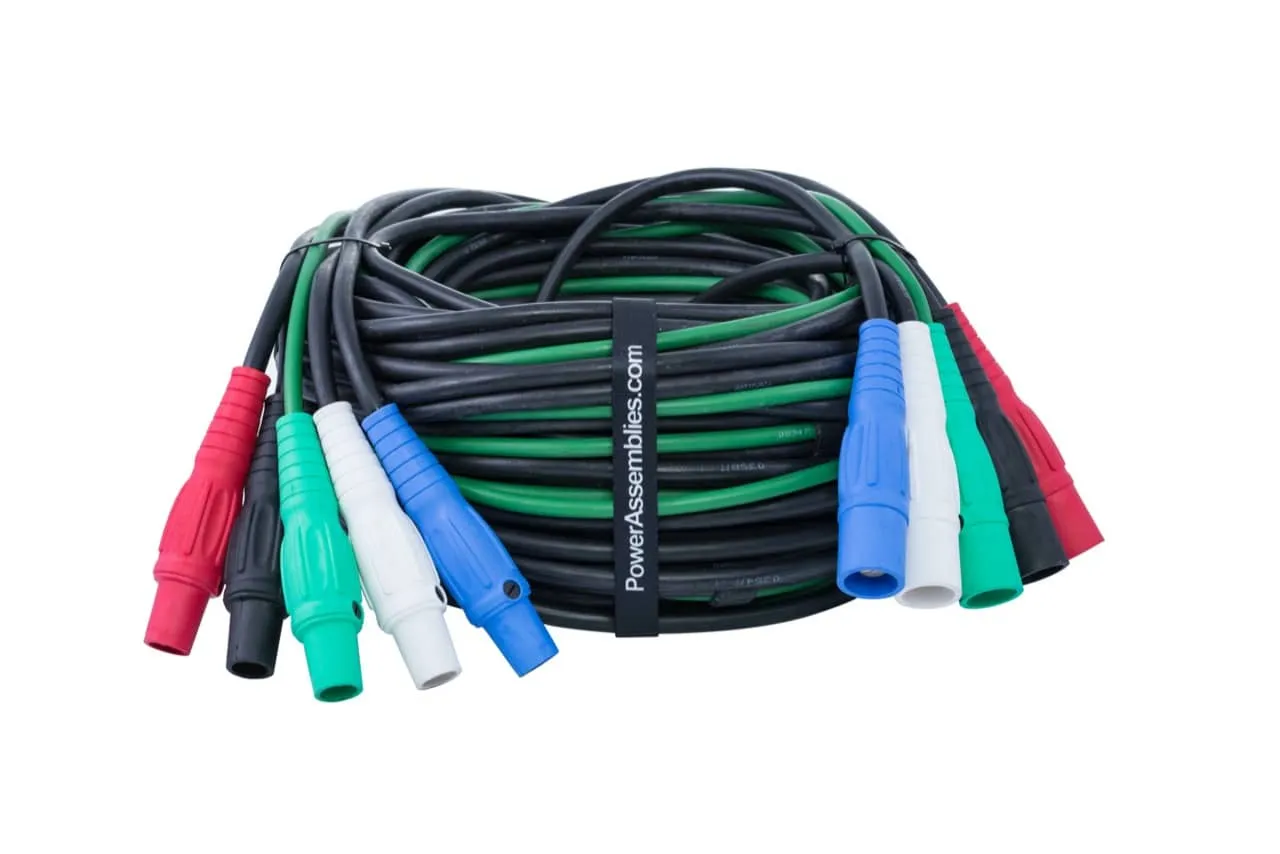Smaller generators power a large portion of the portable power market. Homeowners, county fairs, concerts and events use portable generators for mobile temporary power to power lights, air conditioners and other critical loads. Most of the power requirements for the events are less than 200 amps at 240 volts single phase, which would require a 48KW generator assuming a power factor of 1. Typical manufacturers of these types of generators are Generac, Aggreko and Honda.
Wire Sizes for Smaller Generators
Power is determined by multiplying amperage by volts which can be written as P = IV where P is power measured in watts, I is current, and V is volts. Watts is the same unit of measure used to size a generator. Wire size is specified using a number of factors including voltage, amperage and the general use requirements for the cable. Using our example above, a good cable selection with a 200A requirement at 240V that is flexible would be what the temporary power industry calls stage cable, or SC. The size of the cable is determined by the amperage, and in this case would be 2 AWG. 2 AWG SC cable is rated at a maximum voltage of 600V and an amperage of 190 amps. The amperage is adequate since is it rare that a generator is fully loaded at any given time.
The power circuit of the generator, which in the case of 240V is 2, requires one run of 2 AWG SC cable to power it and one 2 AWG neutral conductor. The generator should also have a ground wire which can be rated at about ½ the amperage of the power circuits, so in this case we will use a 6 AWG cable which is rated at 105 amps. These ratings are assuming the cable is in free air, meaning each conductor is run outside of conduit and is a single conductor. The total number of cable runs for this application is 3 runs of 2 AWG and 1 run of 6 AWG.
Banding Benefits
Managing these cables as individual conductors is difficult. The cables can be twisted when pulled from the generator to the load, they are difficult to hold all at once, and can get separated when laid on the ground causing them to pull from away from the generator. Cables spread out on the ground are also a tripping hazard in high traffic areas. The options of keeping the cables together are to contain them all under one jacket, or to band them together. The ratings of cable in free air are much different than the ratings of the cable in conduit or if the conductors are contained under one jacket. These same cable sizes if contained in conduit or under one jacket would be rated at 80A.
Banding provides the free air current rating of individual conductors while keeping the cables together to avoid separation. Banding is accomplished by wrapping the conductors together every 2 feet. It is important that the conductors are laid out correctly to keep the ends even. The person handling the assembly should consider the total weight of the assembly, which can easily be derived by multiplying the cable weight per foot by the number of cables. In addition to higher current ratings than multi conductor cable, banded assemblies make connector termination and repairs much easier. Stripping the overall jacket on multi conductor cable can be cumbersome, and it is easy to cut too deep, damaging the jacket on the individual conductors.
If you want more information on the benefits of banded assemblies, or would like pricing and specifications, please feel free to
contact one of our distributors.

